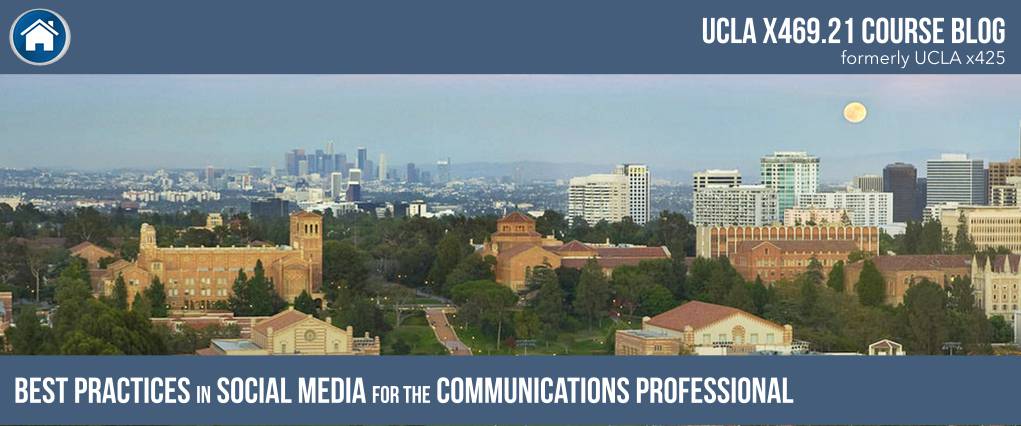
Week 5: A Conversation with Guest Speaker Kate Gallagher by Sharrin Summers
By UCLA X469.21 Student Sharrin Summers
The final topic for our “Best Practices in Social Media for the Communications Professional” class was SEO (or Search Engine Optimization) and Reputation Management, and the guest speaker was Kate Gallegher, SEO strategist at OpenFit.com.
Of all the topics we discussed in class this was the one I knew least about. But after Kate’s presentation, I gained a basic understanding of SEO strategy, keyword research, social sharing, link building and the dark world of black, grey and white hat SEO techniques.
As Kate pointed out, and as we probably all know from experience, 75% of people will view only the first page of search results. This reality highlights why it’s so important to have an SEO strategy to ensure people can discover your website. Not surprisingly, that strategy should take into account the fact that more and more searches are being done via mobile devices.
To develop an effective SEO strategy, it helps to involve everyone on the marketing team – from content editors and social media managers to publicists and advertising managers. In addition, creating a social media editorial calendar can help you develop content that is consistent and effective.
Kate broke it all down into 4 steps:
Step 1 – Keyword Research
- Start with a basic category and then refine from there using tools to discover related content.
- Check competitor content.
- Create a master list of no more than 20 target keywords.
- In some cases, consider target keywords with lower search volume because they are less competitive.
Step 2 – Social Sharing
- After your content is published, build pageviews and inbound links by sharing on social media.
- Use social media as a tool to amplify the ranking factors that Google considers.
Step 3 – Link Building
- Getting other websites to link to your content increases your site’s authority.
- There are 4 primary ways to get links:
- Ask for a link share.
- Ask to guest blog.
- Recover a lost link.
- Post links as part of a product or service review.
Step 4 – On Page SEO
- Posting content that is relevant to your target keywords will optimize your individual web pages and help them rank higher.
- In addition to text content, make sure to optimize the source code and user-friendliness of your site (e.g., speed for pages to load).
While her presentation only scratched the surface of SEO, Kate left us with an invaluable list of websites and tools to use for each step of the process.

